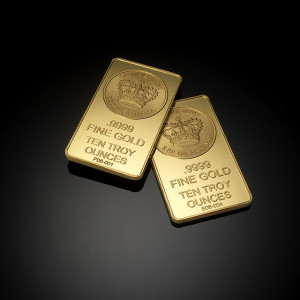by Justin Spittler – Hard Assets Alliance:
Today’s financial markets have acquired a knack for ingesting bad news without so much as a hiccup. Lately, that same resiliency—or more appropriately, complacency—has come under pressure.
After lying dormant for months, volatility has come storming back with a vengeance. Investors are finally coming to their senses—much to the delight of the precious metals community.
Patience Wearing Thin
The problems facing the global economy didn’t come out of nowhere. It just took a jolt of volatility to put them in the spotlight—and you can thank the soaring US dollar and the collapse of energy prices for putting investors on high alert.
Of course, there are perks to a strong dollar and cheap energy. A strong dollar makes imported goods more affordable for American consumers, while it’s estimated that weak oil prices will put roughly $500 into the wallet of the average American driver. While neither is positive for precious metals, the euphoria won’t last long.
An appreciating US dollar makes American exports less competitive. Depressed oil prices could cripple the domestic energy revolution, which has been the backbone of the US recovery. The breakout of the dollar also threatens to derail commodity-centric emerging markets, particularly nations that have relied on cheap credit for growth.
Monetary Tools Becoming Dull
The precarious state of the global economy doesn’t just have investors on edge. Policymakers in countries across the globe face a dilemma: risk an economic crash by stepping away from their maligned economies, or provide their debt-addicted with another dose of stimulus. It’s a lose-lose situation.
Yet it’s a no-brainer for central bankers, whose greatest fear is deflation.
The situation is no different in the United States even though the Federal Reserve ended its quantitative easing program in October. Remember, the Fed has said it will be “patient” in raising rates; and you can bet Yellen will fire up the printing press the second that the US economy shows symptoms of flatlining.
Unfortunately, the next round of stimulus won’t be as effective as previous installments, and investors seem to be waking up to that harsh reality.
Perceptions Change; the Case for Gold Stays the Same
As an analyst, I spend most of my days sifting through data, crunching numbers, and gathering different perspectives in an attempt to gain clues about the future. And yet, I’ll be the first to admit that economic forecasting is a silly process. Nonetheless, my feeling is that gold has hit a bottom.
That’s probably something you’re sick of hearing. Some in the precious metals community have been calling an end to the gold market rut for months… others for much longer.
Why do I think that this time is different? It has little to do with fundamentals. The case for owning gold has changed little recently, although we’re receiving more and more reminders. What’s changing is the perception of Western investors.
After witnessing unconventional monetary policies push financial markets to new heights, investors seem to be losing faith in this grand experiment. This uneasy feeling is starting to bring them back to gold—the most crisis-proof asset of all.
Luckily, there’s still an opportunity for investors to pick up gold while incurring little downside risk. There are few sellers at today’s prices, and those holding gold are what I like to call “strong hands.”
Even if gold hits a few speed bumps throughout the year, investors will sleep easier knowing that some of their wealth is held in the most time-tested of all assets.
Article originally posted in the January issue of Smart Metals Investor at HardAssetsAlliance.com.



